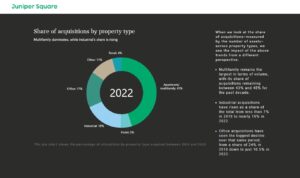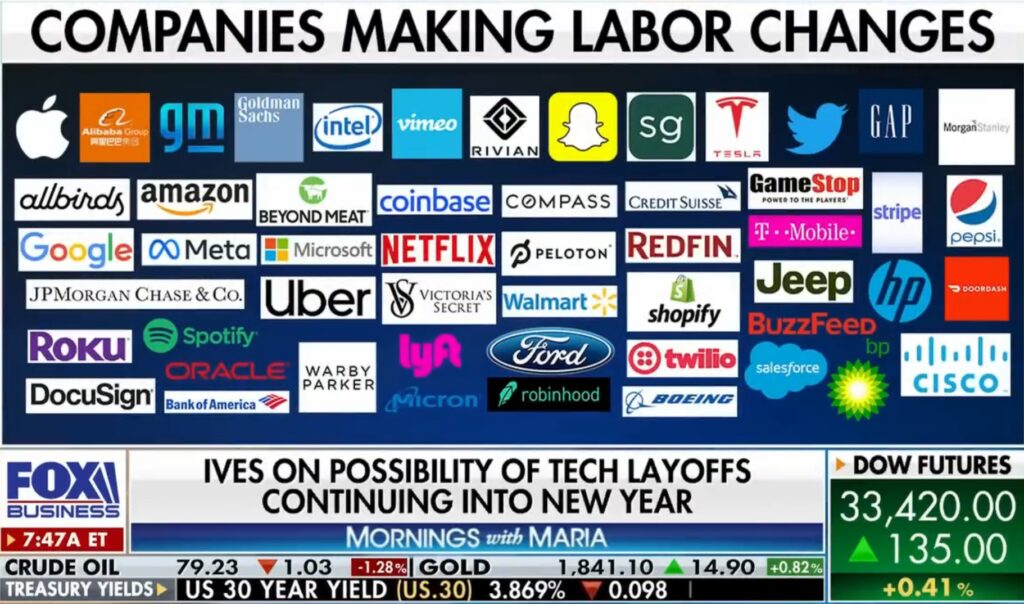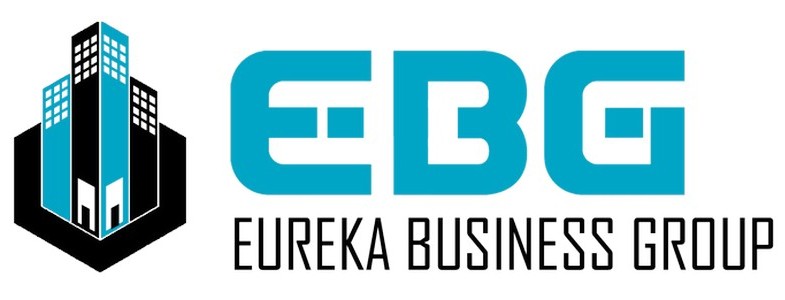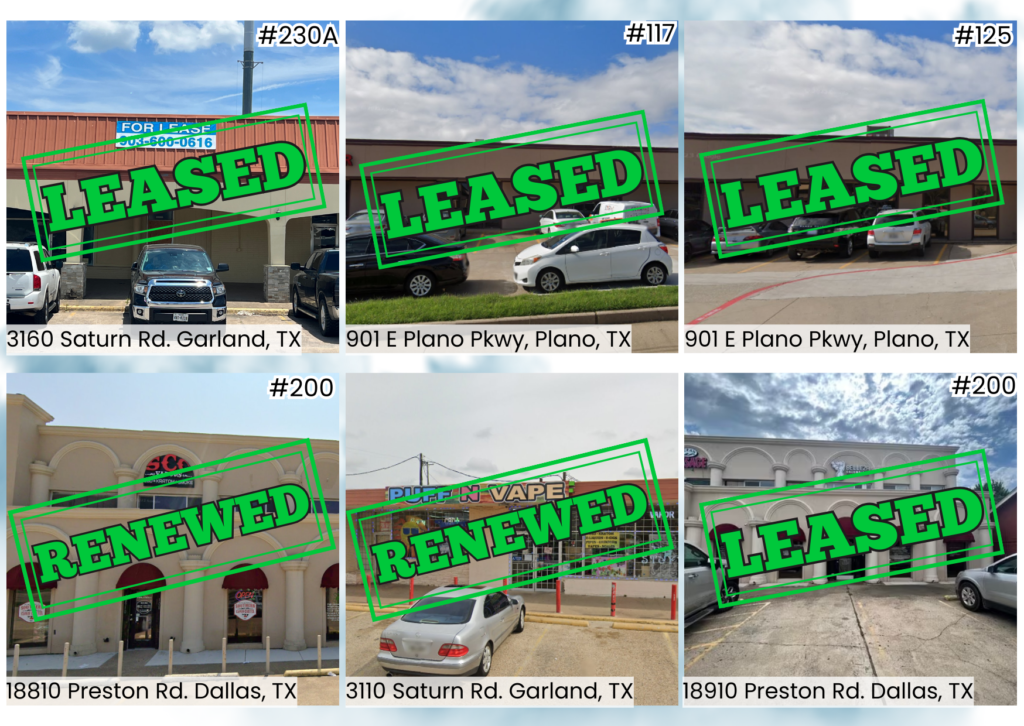- Home
- Articles posted by admin
Navigating the 2023 Real Estate Market: Buy Now or Wait It Out?
Navigating the 2023 Real Estate Market: Buy Now or Wait It Out?
In this video, Joseph Gozlan from the Eureka Business Group discusses the current state of the real estate market in 2023. With inflation soaring, high-interest rates, and declining property prices due to reduced availability of money, many are unsure whether to buy real estate or wait. Gozlan compares these conditions to the last recession in 2007-09, highlighting the similarities. Joseph notes that while property prices may continue to decrease, the dwindling availability of funding due to banks’ reluctance to lend is a significant issue. He predicts a “race to the bottom,” whereby property prices will be at their lowest, but securing funding will be extremely challenging, much like in 2009-2010. Joseph advises his viewers to focus on the long-term game, drawing on the analogy “You marry the property, you date the interest rate.” He emphasizes that, in the long run, the value of the property is what matters the most, as interest rates can be renegotiated during refinancing. Finally, Joseph Gozlan highlights emerging opportunities in the industrial and retail sectors, where high-quality properties with national-level tenants are trading these days at 6.5% to 8% cap, creating potential for great deals and an opportunity for those interested in building legacy wealth. He encourages his audience not to wait too long to invest, emphasizing the importance of seizing good opportunities when they can still secure a decent loan. Despite the uncertainties, Joseph believes that we are currently in the “opportunity zone,” indicating a promising time for real estate investment.
If you’re looking for commercial real estate in Texas (Buy, Sell, Lease) feel free to call us: at 903.600.0616 or contact us through our website
Tags: #RealEstateInvesting, #CommercialRealEstate, #RealEstate2023, #MarketAnalysis, #Inflation, #InterestRates, #PropertyPrices, #InvestmentStrategy, #LegacyWealth, #IndustrialRealEstate, #RetailRealEstate, #EurekaBusinessGroup, #JosephGozlan

May 2023 DFW Industrial & Flex Active Listings Insights
May 2023 DFW Industrial & Flex Active Listings Insights
Author: Joseph Gozlan, Eureka Business Group | Published: 05/09/2023
As in every month, we share on our DFW Industrial & Flex Digest some interesting insights drawn from the DFW Active Industrial & Flex Listing.
The data source we use is Costar and conversations we have with local owners & brokers. For the sake of data simplicity and the interest of our clients, we focused our research on the Class A/B Industrial & Flex properties at the sizes between 5KSF and 60KSF.
As of the first week of May 2023, there are currently about 140 Such properties actively offered for sale in the DFW market place. Of these 140 properties, there is a relatively even distribution between the small, medium and larger properties (within the above mentioned range).
Asking Prices: One of the things we found very interesting was the massive differences in the price per SF regardless of property size. Each size group had cheap properties in the sub $40/SF range and very expensive properties asking over $750/SF.
Locations wise, Dallas is leading the list with about 20% of the total number of available properties. No less than 44 cities have at least one industrial property available for sale within the city limits which shows how important the asset class had become in recent years. No more hiding the industrial/flex spaces in the cities around the airport in areas w/o public transportation and accessibility. Affluent suburbs such as Plano, Allen, Prosper and Celina all have available industrial or flex properties to sell and leading the northern suburbs is Frisco with 9(!) industrial properties offered for sale.
Days On Market: Surprisingly enough, the Average DOM (Days on Market) was lower in the larger category (over 20KSF) standing at 145 days compared to 195 and 243 for the small and medium sizes.
For more insights on the average asking price, Construction materials, property vintage, etc.
Click here to download the full May 2023 DFW Industrial & Flex Active Listings Insights PDF
#industrialrealestate #commercialrealestate #legacywealth

2022 Commercial Real Estate Acquisition Trends: Multifamily Continues to Lead, Industrial Surges, Office and Hotels Struggle
2022 Commercial Real Estate Acquisition Trends: Multifamily Continues to Lead, Industrial Surges, Office and Hotels Struggle
Author: Joseph Gozlan, Eureka Business Group | Published: 04/21/2023
Juniper Square has recently released a comprehensive report analyzing the commercial real estate acquisition volumes by asset class in 2022. The report offers valuable insights into the current state of the market, and how it is evolving. As a commercial real estate investor, understanding these trends can help inform your investment strategies and help you make informed decisions.
The report reveals that the multifamily asset class continues to dominate the market, accounting for 45% of all commercial properties acquired in 2022. This comes as no surprise, given the favorable agency debt, strong rent growth, and a plethora of multifamily “gurus” that flooded the real estate circles in the last few years…
Multifamily has consistently held the top position in the past decade, with its share of the market fluctuating no more than 5% of the overall share of commercial real estate transacted.
On the other end of the spectrum, the office and hotel asset classes have experienced a significant decline, with their combined share dropping from 34% in 2013 to just 22% in 2022. The pandemic has had a significant impact on both asset classes. The demand for office space plummeted, with remote working becoming the norm for many businesses. As a result, office buildings have seen a decline in occupancy rates, and investors have become more cautious about investing in this asset class. Similarly, the pandemic has significantly impacted the demand for hotels, with travel restrictions and reduced business travel leading to decreased occupancy rates and revenue.
However, one asset class that has emerged as the real winner in 2022 is industrial properties. The report reveals that the industrial asset class has experienced a 450% growth rate since 2013, rising from just 4% to 18% of the commercial real estate acquisitions volume in 2022. The growth in e-commerce has played a significant role in driving demand for industrial properties. As e-commerce businesses continue to thrive and expand, they require larger spaces beyond the confines of the founder’s living room or garage. This has resulted in increased demand for industrial buildings, with businesses seeking spaces ranging from 2,000SF flex suites all the way up to millions of square feet distribution centers.
The report highlights the importance of keeping abreast of the latest market trends and using data to inform investment decisions. As a commercial real estate investor, it is crucial to identify emerging trends, evaluate their potential impact on the market, and adjust your investment strategies accordingly.
In conclusion, while multifamily remains the dominant asset class, industrial properties are emerging as a significant growth opportunity for investors. It is essential to keep abreast of the latest market trends, evaluate the potential impact on your investments, and make informed decisions based on the data available.
What do YOU see in this chart? Do you agree with the above insights or do you think differently?
Feel free to vote, comment, like as you see fit!



Joseph Gozlan,
Commercial Real Estate Advisor
- Email: Joseph@EBGTexas.com
- Office: (903) 600-0616
- Mobile: (469) 443-6336
6 Things Multifamily Owners Should Pay Special Attention In This Market
6 Things Multifamily Owners Should Pay Special Attention In This Market
Everyone has been talking about the $230M multifamily portfolio that was foreclosed on by Arbor (a Fannie Mae DUS lender) in the past week.
The main talking points were pointed at syndication, education groups and such. Not many were talking about what can multifamily owners do today to avoid being in the same unfortunate position. So I thought I’d share some hard learned lessons from our own experience as owners, operators, syndicators and brokers of multifamily and other commercial real estate.
#1 The income-expense graph inversion
Every multifamily investor can tell you that NOI (Net Operating Income) is composed of Income less Operational Expenses. In the past 10+ years we’ve been living in a world where the rent growth graph has been growing at a rate of 5%, 10% and in some cases even 20% year over year while the expenses graph was growing at a normal inflation rate of 2%-3% per year. That means there was a positive difference between the two graphs which pushed NOIs higher year over year and created the multifamily merry-go-round where properties were bought and sold withing months(!) and everyone kept making money.
And then COVID happened…
All of the sudden, supply chains were stuck, causing material shortages. People found ways to work from home, which caused a huge labor shortage in the blue-collar jobs sector. The government was printing money like there’s no tomorrow, and everyone was spending money like there’s no tomorrow which pumped the economy with a lot of hot air until the end of 2022 when the balloon just popped. Now we have inflation rates ranging between 6% and 8% officially and much more unofficially. Chick-Fil-A is paying $19/hr and Walmart distribution centers are paying $24-$26/hr.
Why does it matter? Because the graph is now inverted! Expenses are growing at a much faster pace than rents, which in most of the country are going flat or worse.
What does it mean? It means that that a stabilized property is now on a down trend for the NOI!
So, the first thing multifamily owners should pay attention to is: The income-expense graph inversion
#2 Checks & Balances
Many Multifamily owners use 3rd party property management companies to run the day day-to-day operations of the properties. Unfortunately, many of these management companies have very little is any checks and balances systems to make sure everything is running as it should be. We’ve seen fees not being charged, fraud, embezzlement, unreported deposits, move-outs without final account statements, move-ins without deposits and many other issues that the lack of audit processes let through and hurt the property’s bottom line. Multifamily owners, specifically ones that don’t self-manage, should reach out to their 3rd party management teams and ask what checks and balances systems and processes they have in place to ensure that what they think is being done is actually done and done correctly. If you find the management team is lacking the required systems and processes, then you need to work with them to make sure these gaps are covered ASAP. Management teams that refuse to do so in a timely manner, should not be trusted with the care of your property…
#3 The Language In The Loan Documents
Not all loan documents are born equal, and every lender will have their own version. In fact, same lender, different loans can have significant differences because lenders (especially Fannie/Freddy DUS lenders) use a pool of agency approved attorneys and they have different format and different approach to the loan documents. The strength of the borrower’s attorney is also a factor in this.
All multifamily owners, regardless of the status of their property, should revisit the loan documents and refamiliarize themselves with the terms and conditions in it. What the lenders can ask/demand/force and take a note of these things. Multifamily owners should probably make a list of these things that would be considered technical defaults and work with their management team to review and make sure the properties are in compliance so the lenders won’t have any ammunition against you!
#4 The Cashflow Analysis
As mentioned above, many Multifamily owners choose to use a 3rd party property management company to run the day-to-day operations of the properties. As such, some owners choose to receive monthly reports and just glimpse over them, paying only attention to the bottom line. In today’s market, especially considering the income-expense graph inversion mentioned in the beginning of this article, paying attention to the cash-flow of the property is critical! Multifamily owners should prepare and/or review a cashflow analysis report that shows every dollar that came in and every dollar that was spent. Please note, this is not(!) the P&L report provided by the property management team (which in many cases is on an accrual basis). Every dollar that made it to the bank vs. every dollar that left the bank. Poor cashflow is the #1 cause for properties to get in trouble with the lenders. Poor cashflow also causes deferred maintenance and ironically, in a circular notion, deferring maintenance will allow incompetent managers to mask poor cashflow until a very late stage!
#5 Physical vs Economical Occupancy
There’s a fine line between “keeping it full” and high occupancy. Many Multifamily owners have a benchmark of occupancy for the management team which in some cases leads to “let’s not evict” and “give them another chance” mentality because the management company doesn’t want to show a drop in occupancy. Compensating a 3rd party property management company based on occupancy could incentivize the wrong behavior. Multifamily owner should regularly review the delinquency report and pay attention to how high the balances are compared to the monthly rent (e.g., if the unit rent is $800 and the outstanding balance is $2500 then that tenant didn’t pay rent for 3 consecutive months!). Most multifamily management software would also indicate next to every unit/tenant how many times they were late on payment in the past 12 months. Tracking this information on a regular basis will help Multifamily owners identify bad trends and allow them to take action sooner rather than later!
#6 Labor Costs
One of the large expenses, if not the largest one, is payroll. On-site managers, office team, maintenance techs, grounds, etc. are all hard to hire and retain in the post COVID world and the average salaries have increased by tens of percentages. Monitoring your labor costs closely can help identify inefficiencies, time theft (that’s a real thing!), abuse of overtime and over staffed teams. These items can prove to be massive money pits and put a real financial strain on the property!
As owners of multifamily ourselves, brokers, asset managers and special servicers for lenders we predict that many multifamily owners will find themselves in a corner that will be hard to get out of if they don’t pay closer attention to the details until we see an improvement in the market conditions and the income to expense graphs find their way to normalcy.
If you are a multifamily owner and need help with assessing the situation on a property or a portfolio, we can help with that. We can be as high level as reviewing reports and pointing out potential risks or we can be as thorough as spending time with your on-site team and reviewing the operations and financials of the property. Call me today (my number is on my profile) to discuss your needs and see if our service can bring value!


Joseph Gozlan,
Commercial Real Estate Advisor
- Email: Joseph@EBGTexas.com
- Office: (903) 600-0616
- Mobile: (469) 443-6336
Is this the year multifamily operators stop charging back for utilities?
Is this the year multifamily operators stop charging back for utilities?
Author: Joseph Gozlan, Eureka Business Group | Published: 01/30/2023
Is this the year multifamily operators stop charging back for utilities? Multifamily properties have unique challenges when it comes to utility billing. In the last 6-8 years, property operators have used a Ratio Utility Billing System (RUBS), where residents are billed for their individual usage of utilities such as electricity, gas, water, and waste management. However, recent trends show that more multifamily operators are opting to go back to the fixed utilities fee system.
A fixed utilities fee is a flat rate charged to residents for their use of utilities. This fee is based on the average consumption of utilities in the property and is charged to residents regardless of their actual usage normally based on the unit size and how many occupants are in the unit.
There are several reasons why multifamily property owners are making the switch from chargebacks to fixed utilities fees.
Simplicity and Convenience: One of the primary advantages of fixed utilities fees is the simplicity and convenience of billing. Unlike chargebacks, which require operators to keep track of the property usage and submit meter readings, fixed utilities fees are a straightforward, predictable cost. This eliminates the hassle of managing and billing for individual utility usage, freeing up operators to focus on other aspects of operations.
Increased Revenue: Another benefit of fixed utilities fees is increased revenue for the property owners. With a RUBS chargeback system, property owners are normally dependent on 3rd party vendors to accurately calculate the usage, which can result in lost revenue if usage is underreported. On the other hand, fixed utilities fees are based on average usage and are not subject to the same inaccuracies. This results in a more consistent and predictable stream of revenue for property owners.
Improved Cash Flow: Fixed utilities fees also improve cash flow for property owners. Unlike RUBS, which can result in uneven payments throughout the month, fixed utilities fees provide a consistent source of income that can be relied upon to meet operating expenses.
Reduced Maintenance Costs: Fixed utilities fees can also help reduce maintenance costs for property owners. In a RUBS system, residents may be reluctant to report higher than normal usage, which can result in maintenance issues going unnoticed. With fixed utilities fees, property owners have a better understanding of the overall consumption of utilities and can proactively address any issues before they become a larger problem.
Compliance: Implementing a RUBS system is complicated because of all the rules and regulations that may (and often do) differ between state, counties and municipalities leading to the fact most multifamily operators choose to hire 3rd party vendors to take on that responsibility.
Enhanced Resident Satisfaction: Finally, fixed utilities fees can enhance resident satisfaction. In a chargeback system, residents may be frustrated by unexpected spikes in their utility bills, or feel that they are paying more than their fair share. Fixed utilities fees provide residents with a predictable cost, which can lead to a more positive living experience.
While fixed utilities fees have many benefits for property owners, there are also some drawbacks to consider. For example, residents who use less utilities than average may feel that they are paying more than their fair share. Additionally, if property owners do not accurately estimate the average consumption of utilities, fixed utilities fees may be too high or too low, which can result in lost revenue or increased costs.
Despite these potential drawbacks, the trend towards fixed utilities fees in the multifamily property industry continues to grow. Property owners who are considering making the switch from RUBS to fixed utilities fees should carefully weigh the benefits and drawbacks and consult with a professional to determine the best option for their specific property and residents.
In conclusion, multifamily property owners are increasingly opting for fixed utilities fees over RUBS and chargebacks for their convenience, increased revenue, improved cash flow, reduced maintenance costs, compliance and enhanced resident satisfaction. While fixed utilities fees may not be the best option for every property and every resident, they provide many benefits that make them an attractive option for many property owners.


Joseph Gozlan,
Commercial Real Estate Advisor
- Email: Joseph@EBGTexas.com
- Office: (903) 600-0616
- Mobile: (469) 443-6336
Six things to do preparing your business for sale
Six things to do preparing your business for sale:
Author: Joseph Gozlan, Eureka Business Group | Published: 01/20/2023
- Clean up your books. Take off all the “seller discretionary income” items.
- Do an inventory count. Calculate both cost (what you paid) and retail value
- List all the Furniture and equipment that will convey with the business. Come up with what it would cost to buy it new today and what is the current fair market value.
- Make a list of everything that was involved in preparing your space for business (e.g. installing ventilation in hair salon, grease trap in a restaurant, etc.)
- Make a list and be prepared to discuss your competition and what is your competitive edge.
- Find a local business broker to help you maximize the proceeds you can get from the sale!

Tech Companies Keep Cutting Jobs!
Tech Companies Keep Cutting Jobs!

How to start a business without money?
How to start a business without money?
At Eureka Business group we get this question often so we decided to list 8 Ways to finance your new business!
Eureka Business Group helps business owners match with qualified investors to sell their business.

BlackRock gloomy outlook for 2023
BlackRock 2023 report doesn’t give a very optimistic outlook for 2023. They expect inflation to stay way above the 2% target and suggest that Fed will have to make an impossible decision between leaving the economy to live in a high-inflation state for a prolonged period (years!) or to keep rising rates and crush the economy into a deep recession.



